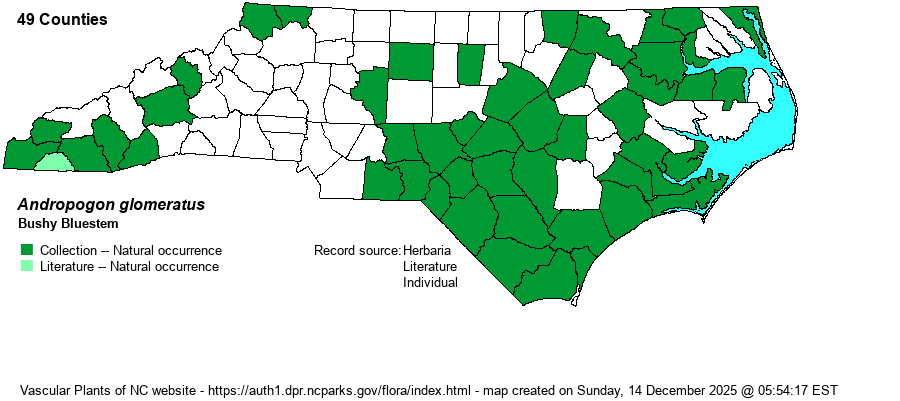| taxonName | relationship | relatedTaxonName | relatedTaxonRefText | relComments |
|---|
|
| Andropogon glomeratus | = | Andropogon glomeratus var. glomeratus | Flora of North America (1993b, 1997, 2000, 2002a, 2002b, 2003a, 2004b, 2005, 2006a, 2006b, 2006c, 2007a, 2009, 2010) | |
| Andropogon glomeratus | = | Andropogon glomeratus var. glomeratus | Kartesz (1999) | |
| Andropogon glomeratus | = | Andropogon glomeratus var. glomeratus | Flora of Virginia | |
| Andropogon glomeratus | = | Andropogon glomeratus var. glomeratus | Wunderlin & Hansen Flora of Florida (3) | |
| Andropogon glomeratus | = | Andropogon glomeratus var. glomeratus | Weakley et al. (2011)=Y. Key adapted in part from Z. | |
| Andropogon glomeratus | < | Andropogon virginicus | Radford, Ahles, and Bell (1968) | |
| Andropogon glomeratus | = | Andropogon virginicus var. abbreviatus | Gleason and Cronquist (1991) | |
| Andropogon glomeratus | = | Andropogon virginicus var. abbreviatus | Fernald (1950) | |
| Andropogon glomeratus | = | Andropogon virginicus var. abbreviatus | Gleason (1952) | |
| Andropogon glomeratus | = | Andropogon virginicus var. abbreviatus | Godfrey and Wooten (1979, 1981) | |
| Andropogon glomeratus | = | Andropogon virginicus var. abbreviatus | Flora of West Virginia | |
| Andropogon glomeratus | < | Andropogon glomeratus | Hitchcock & Chase (Manual of US Grasses) | |
| Andropogon glomeratus | < | Andropogon glomeratus | | |
| Andropogon glomeratus | < | Andropogon glomeratus | Small (1933, 1938) | |
| Andropogon glomeratus | < | Andropogon glomeratus | | |
| Andropogon glomeratus | < | Andropogon glomeratus | Wofford (1989) | |
| Source: Weakley's Flora |

